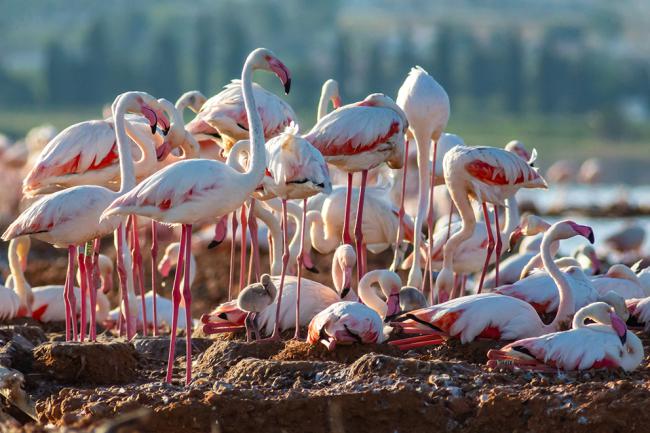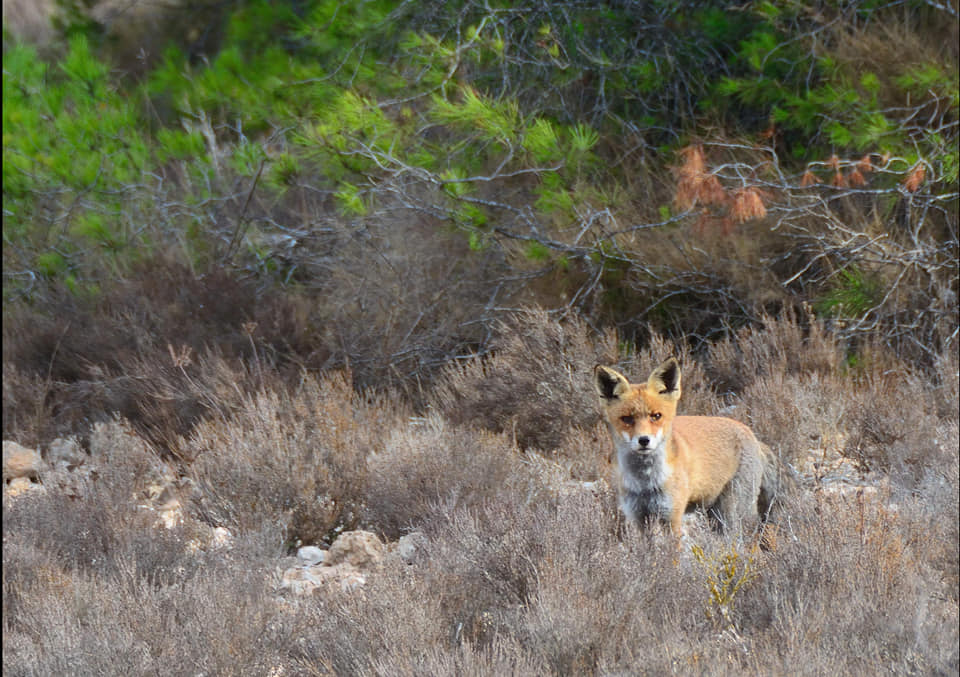Increasingly common in the fields and orchards of Bajo Segura, the fox (Vulpes vulpes) is now being more regularly sighted close to residential areas and even on the streets of some local urbanisations. This week it has been seen on the edge of El Chaparral, and La Mata in Torrevieja.
It is not a protected species, but it is very elusive, although its presence in forest and agricultural areas of the Vega Baja is not unusual. It can regularly be seen roaming around Las Rabosas, Guardamar del Segura or Cala de la Zorra in Torrevieja.
According to the biologist Juan Antonio Pujol, an explanation for this higher frequency of sightings can be found in the months of confinement and de-escalation as a result of the health crisis.
The foxes breed in spring, litters of six and seven cubs, and the specimens that appear regularly on social networks are young. They add to the wealth of natural fauna that can be seen in the Vega Baja in these covid months.
Another striking example of wildlife returning to the area is the flamingo breeding for the first time in the Torrevieja lagoon, and there is also a greater presence of hedgehogs, ladder snakes and other animals that can be increasingly observed in residential areas, even after the silence and tranquillity of confinement has come to an end.

But the fox has always been there. Their tracks and the remains of their excrement are common on the roads most travelled by visitors to the Natural Park, before and after the pandemic.
In addition to Torrevieja there is also more information on examples of wildlife seen in places where there has previously been none, or very little, such as the Orihuela Costa urbanisations, where only small areas of Mediterranean vegetation remain without human presence around the boulevards and ravines that have not yet been urbanised by the Orihuela Council, especially in the surroundings of the Dehesa de Campoamor.
Sightings of foxes are commonplace on the secondary roads that cross the protected landscape of Sierra Escalona, Rebate, Torreagüera and where San Miguel de Salinas meets with Orihuela Costa. They usually make “their rounds” at daybreak or early in the morning.
The fox is very useful in its environment because, like all predators, it keeps down the populations of rabbits and rodents and also keeps at bay the diseases that these animals can transmit. The fox eats everything, and if it needs to, it is able to get close to residential areas and survive in them, even if they are densely populated. He can survive by eating fruit as some vineyards in the natural park will confirm, but he much prefers rabbits and rodents.
Scientific estimates indicate that a single fox is capable of hunting 3,000 rodents a year, a plus when the increase in the presence of rats is making itself felt in residential areas on the coast. It is also a specialist in rabbits, and this is also a useful advantage to farmers in the Vega Baja where there are large agricultural areas affected by the damage they cause to crops.
Image: Crónicas Naturales de Torrevieja





